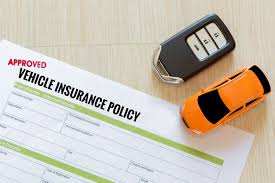Why Smart Claim Filing Matters in 2025
Filing an auto insurance claim might sound simple—but doing it the smart way can save you time, money, and stress. Whether you’ve had a fender-bender or a serious accident, knowing the right steps to take can mean the difference between a smooth payout and a frustrating delay. In 2025, insurance companies are increasingly using digital tools, stricter timelines, and AI to process claims—so it’s more important than ever to be prepared. This guide walks you through the 10 smartest steps to follow after an accident to protect yourself, your finances, and your vehicle.
10. Stay Calm and Check for Injuries

Your safety comes first. If you’re involved in an accident, stop the vehicle and check for injuries—your own and others’. If anyone is hurt, call 911 immediately. Staying calm helps you make better decisions and collect accurate information. Panic can lead to mistakes that affect your claim later. Even if it’s a minor fender bender, take a moment to breathe and assess the situation before doing anything else. Your insurance company will want a clear, calm explanation of events.
9. Move to a Safe Location

If the accident is minor and the car is drivable, move to the side of the road or a safe location. This helps avoid further accidents and ensures everyone’s safety. Turning on your hazard lights and placing warning triangles (if available) also signals to other drivers to slow down. Insurance companies appreciate that you took smart steps to protect your property and others. Document your surroundings as they were before moving the vehicle.
8. Call the Police and Get an Accident Report

Even in small accidents, having a police report is crucial. It’s an unbiased document that verifies the incident, which helps when filing your auto insurance claim. Give honest and clear information to the officer, but never admit fault—just stick to the facts. Get the officer’s name, badge number, and copy of the report if possible. This report becomes valuable evidence when your insurance provider investigates the claim.
7. Collect Evidence and Take Photos

Take clear photos of the accident scene, vehicle damage, license plates, road signs, and any injuries. Try to get wide-angle shots and close-ups from different angles. Photos act as undeniable evidence and can make or break your auto insurance claim. Also, note the time, date, weather, and road conditions. This helps your insurer build a strong case, especially if fault is being disputed by the other party.
6. Exchange Information with All Parties Involved

Get the names, contact numbers, insurance details, driver’s license numbers, and vehicle registration numbers from everyone involved. Also, gather contact details of any witnesses. Never rely solely on the police report. Double-check all the data for accuracy. A small mistake like a misspelled name or wrong license plate could delay or even invalidate your auto insurance claim.
5. Notify Your Insurance Company Immediately

Call or use your insurer’s app/website to report the accident as soon as it’s safe to do so. Most companies require prompt notification—delays can lead to denial of claims. Be honest but concise when explaining the incident. Share photos, documents, and the police report if available. Most major insurers now allow uploads directly via mobile apps, which speeds up the process.
You May Also Like : 10 Smartest Ways to Compare Insurance Quotes Online
4. Understand Your Coverage Before Filing

Before going too deep into the process, know what’s covered. Are you eligible for rental reimbursement? Do you have collision coverage? Is the other driver at fault and uninsured? Knowing your deductible and limits can save you surprises later. If unsure, ask your insurer to explain it clearly. This step can also help you decide whether it’s even worth filing a claim—especially for minor damage under your deductible.
3. Work with the Claims Adjuster Efficiently

Once your claim is filed, an adjuster will contact you to inspect the damage and assess the situation. Be cooperative, provide accurate information, and be available for calls or inspections. If you’ve collected solid evidence, the process should go smoothly. Adjusters may offer a settlement—review it carefully and don’t hesitate to ask questions. You’re not required to accept the first offer if it seems low.
2. Choose a Trusted Repair Shop

Your insurer may suggest a list of approved repair shops, but you’re usually free to choose your own. Make sure the shop provides written estimates, guarantees their work, and communicates directly with your insurance company. A reliable repair shop can prevent billing issues and ensure the job is done correctly. Ask about turnaround time, use of OEM parts, and warranties before agreeing.
1. Follow Up and Keep Records

Don’t assume everything’s handled after submitting your auto insurance claim. Follow up regularly until it’s resolved. Keep a folder with copies of reports, bills, claim forms, and all communications. If there’s a dispute, these documents will support your case. Also, monitor your claim status online and request updates. If your premium increases or coverage changes after the claim, ask why—and shop around if needed.